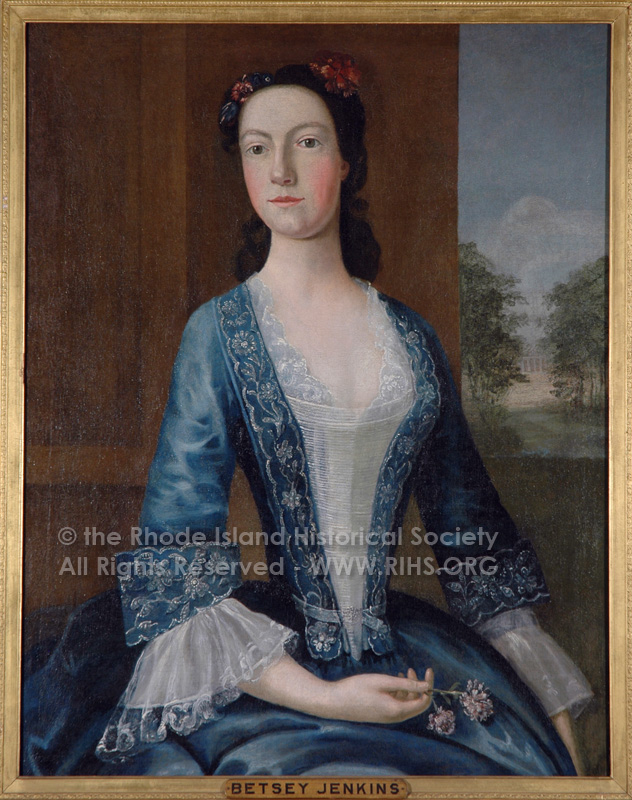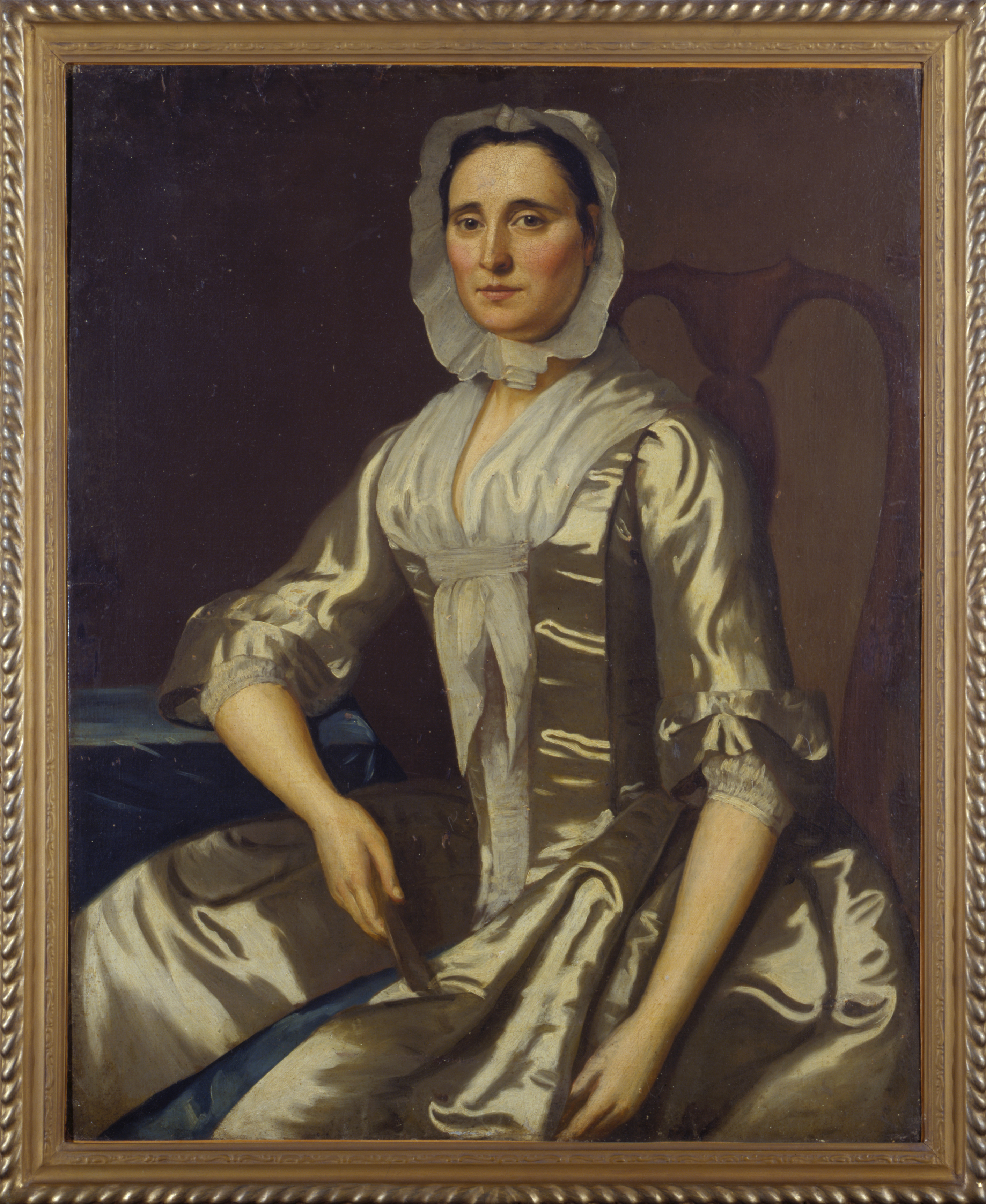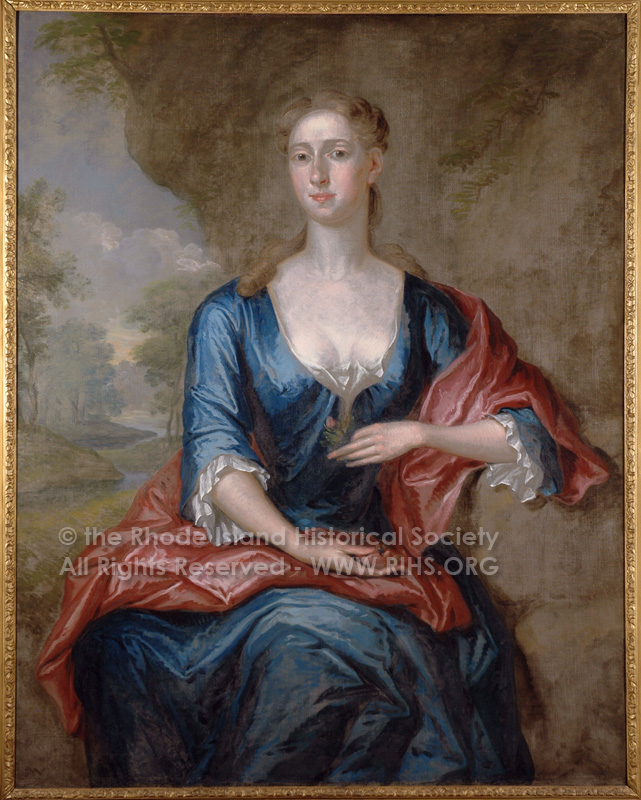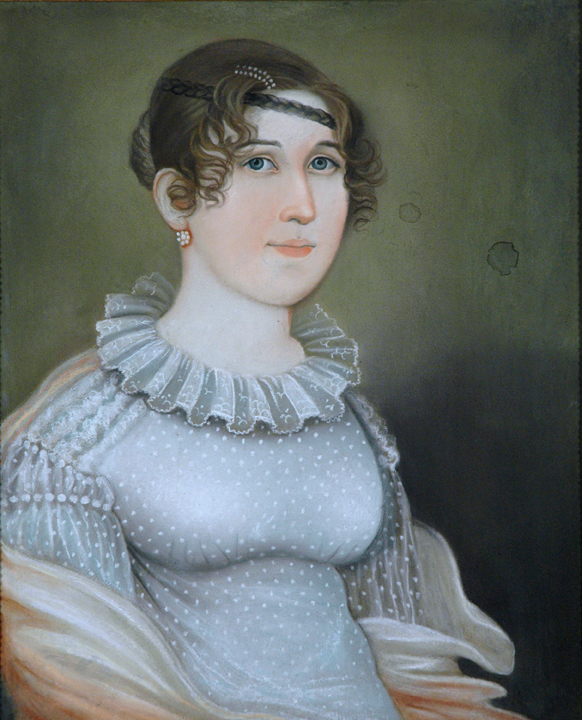Technically, it’s not a corset. The garment driving me mad is a set of stays patterned from an original in the Connecticut Historical Society (CHS 1963.42.4). I’ve re-measured and re-cut the front panels twice, the cups three times and even the back once, because it showed under the test bodice. I’ve given up, and will start over with a different kind of stay.
Women in the 18th century usually bought their stays from a professional stay maker, just as most women today do not make their own bras. But like a well-fitted bra, a set of well-fitted stays is integral to achieving proper garment fit. This is real infrastructure.
 Well-fitted in the 18th century really did mean well-fitted, for high-fashion and middling garments alike. To the left, Betsey Jenkins, painted in 1748 (1905.6.2). The slim, conical shape of her torso and her incredibly erect posture are thanks to her stays. The fit of the bodice of her gown depends on the stays: these truly are foundation garments. Without the stays, the gown wouldn’t fit.
Well-fitted in the 18th century really did mean well-fitted, for high-fashion and middling garments alike. To the left, Betsey Jenkins, painted in 1748 (1905.6.2). The slim, conical shape of her torso and her incredibly erect posture are thanks to her stays. The fit of the bodice of her gown depends on the stays: these truly are foundation garments. Without the stays, the gown wouldn’t fit.
This portrait of Eleanor Cozzens Feke (1947.4.2), painted in 1750-51 by her husband, Newport painter Robert Feke, is one of my favorite paintings in the RIHS collection.  The wide robings on the front of her silvery satin gown and the shadowy back in the image make it slightly tricky to see, but she’s wearing a well-fitted gown over stays, again, that give her the straight-backed posture typical of 18th century women’s portraits. Even women who look like they’re not wearing stays probably are. John Smibert painted Mrs. Browne in 1734, (1891.2.2), and her pose suggests she’s in stays. The articulation of her breasts suggests she may not be, but the drape of the silk around her side hints that she is. There’s a conical shape under that drapery.
The wide robings on the front of her silvery satin gown and the shadowy back in the image make it slightly tricky to see, but she’s wearing a well-fitted gown over stays, again, that give her the straight-backed posture typical of 18th century women’s portraits. Even women who look like they’re not wearing stays probably are. John Smibert painted Mrs. Browne in 1734, (1891.2.2), and her pose suggests she’s in stays. The articulation of her breasts suggests she may not be, but the drape of the silk around her side hints that she is. There’s a conical shape under that drapery.
Contrary to some beliefs, the fully boned stays of the 18th century are comfortable. The ones I have feel comforting in the same way swaddling might be for an infant. Bending and squatting and sitting the ground are all challenging. I’ve sat on the grass in stays and gown and provided plenty of entertainment for a regiment when I made my way up off the ground (not that they helped me).
But in getting ready to clean the John Brown House Museum, I decided I needed a new set of stays. At the short gown workshop at the ALHFAM conference in Bristol in early March, someone asked if I really did, and perhaps I don’t. But I’d like the early 19th century gown I’m making, and the short gown I’ve made, to fit properly, and they simply won’t without the correct foundation.

Julia Treadwell Pinckney (1984.8.1) was painted (1797-1845) around 1817, but the gown she’s wearing is of a style that lasted decades, so the high waist and long slender skirt are typical of the styles that would have been worn in Providence around 1800. The silhouette, even in this half-length portrait, is visibly different—radically different—from the silhouette of the mid- to late-18th century. We interpret the John Brown House to about 1790-1810, and we know that John Brown’s daughters followed the fashions of the times: servants, maids, “help,” would not have. We have no evidence of what John Brown’s servants or slaves or maids wore, but I would expect that in a port town like Providence, fashions would not have lagged twenty years behind, even for working women. St. Louis, far from the east but in communication with New Orleans, showed fashionably dressed Creole women in 1818.
Based on these images, I believe that I would most likely not have worn my ca. 1770 stays in 1800 or 1810, if I could have avoided it. And by the means of used clothing merchants, employment, or my own skills, I would have acquired the new, softer, stays that created the raised bust silhouette. And today, with my own skills, I’m trying to do just that.
~Kirsten Hammerstrom, Director of Collections


for the regency style high wiasted gowns you may not need stays, I’m fairly busty, but i can make those dresses self supporting just by building a firm linen support into the bodice – it gives the right shape and support. just make sure its fitted right below the bust
Thank you for your advice and insight. I very much enjoyed the lovely needlework on your blog. I’ve made some progress on a new set of stays, and will write again soon about that process, and why I chose to continue struggling with stays.